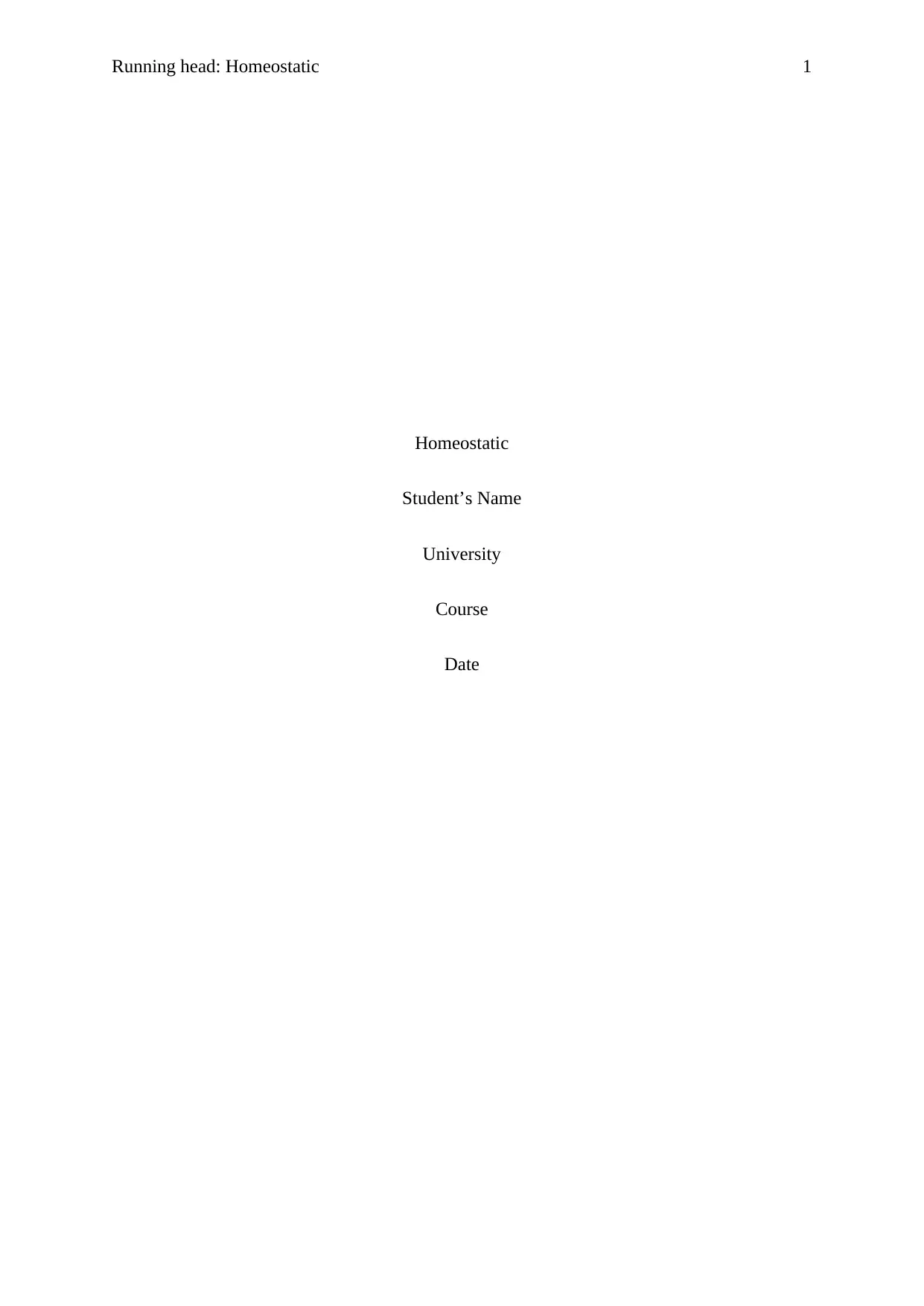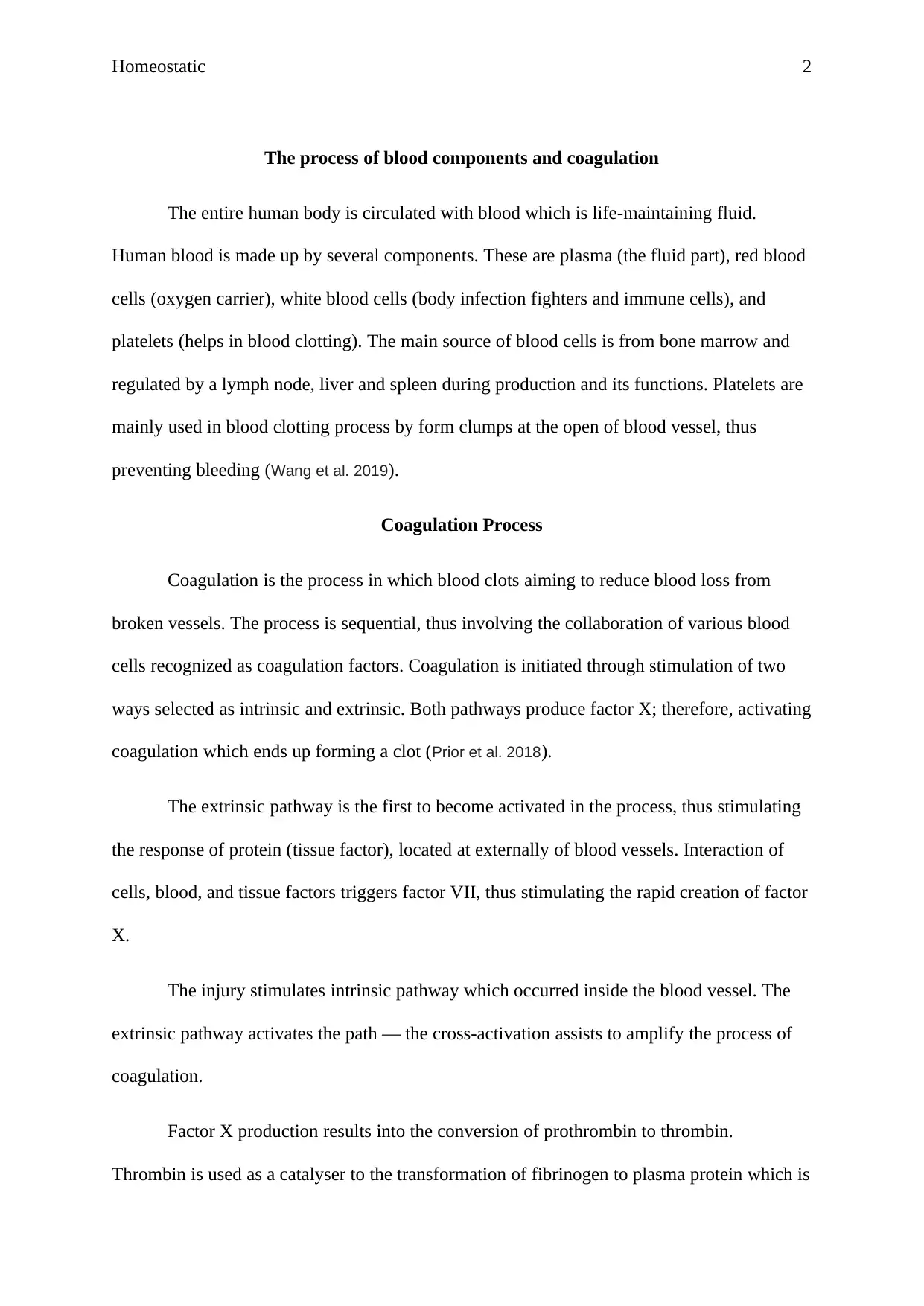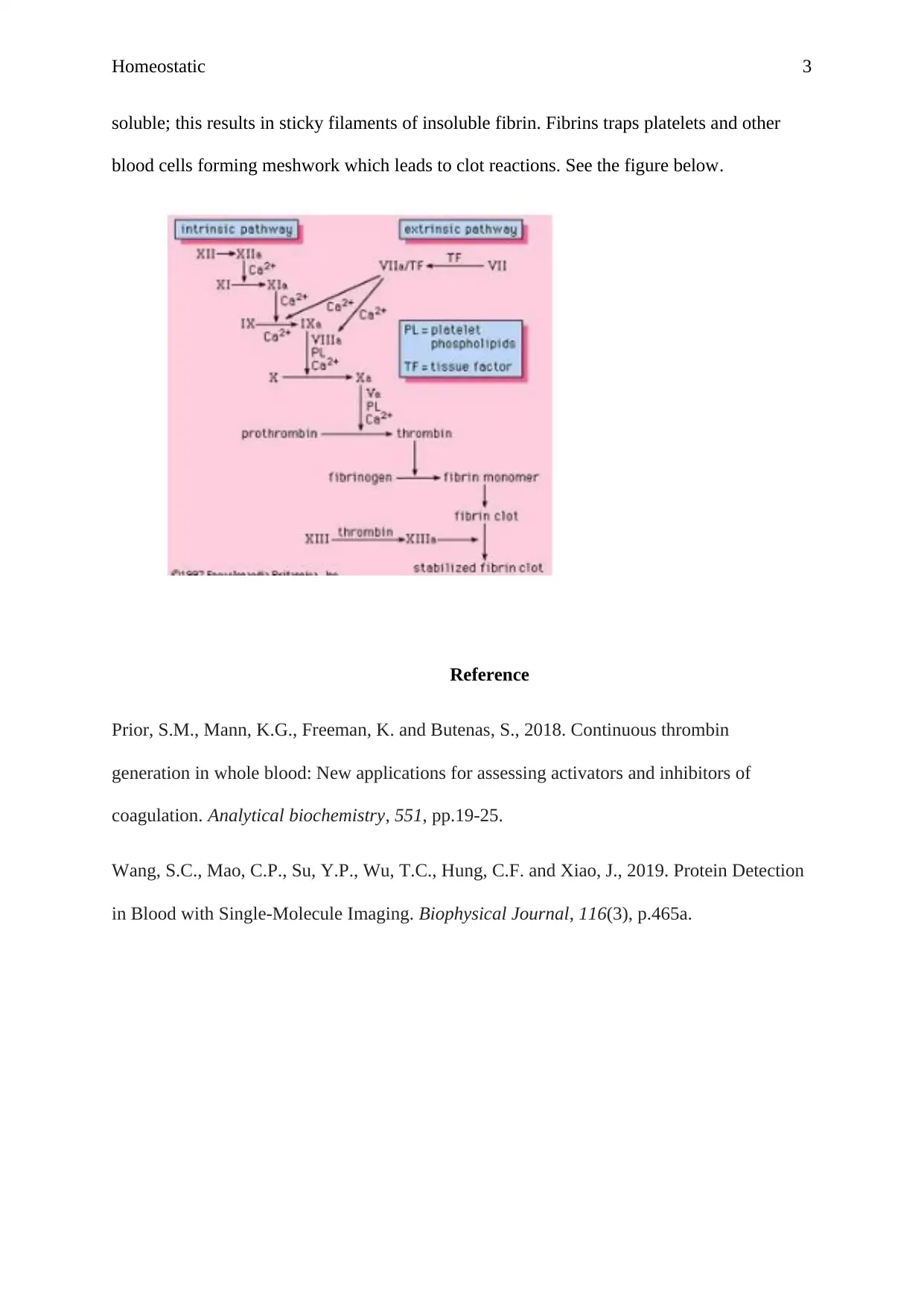University Biology Report: Homeostatic Process, Blood, and Coagulation
VerifiedAdded on 2022/10/03
|3
|441
|25
Report
AI Summary
This report examines the homeostatic process, specifically focusing on blood components and coagulation. It details the composition of blood, including plasma, red blood cells, white blood cells, and platelets. The report explains the role of platelets in blood clotting and the process of coagulation, which is initiated through both extrinsic and intrinsic pathways. The extrinsic pathway involves tissue factors, while the intrinsic pathway is activated within blood vessels. Both pathways converge to activate factor X, leading to the conversion of prothrombin to thrombin and ultimately, fibrinogen to fibrin, forming a clot. The report includes references to support the information presented.
1 out of 3










![[object Object]](/_next/static/media/star-bottom.7253800d.svg)